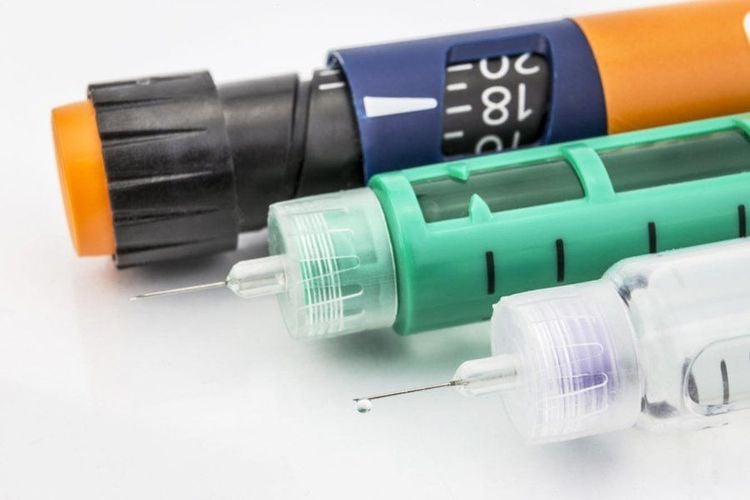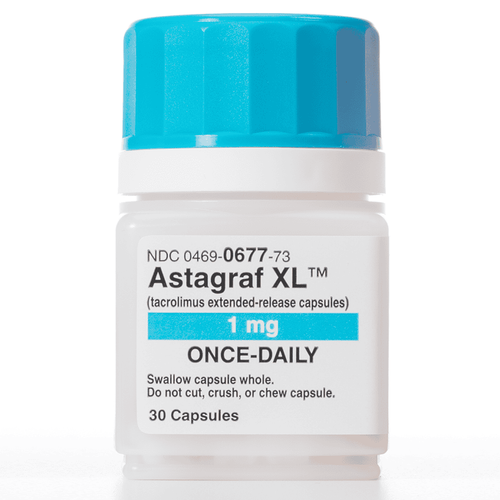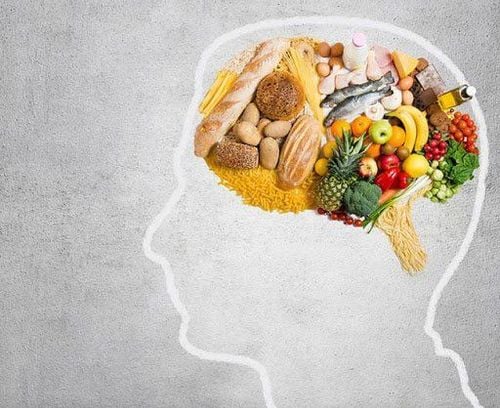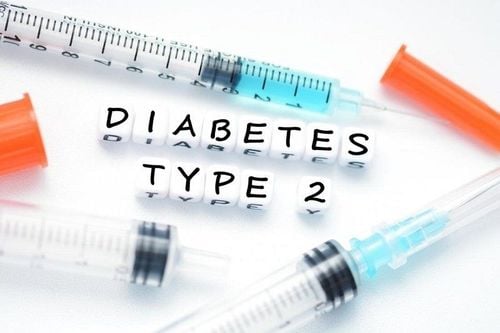This is an automatically translated article.
Diabetes mellitus is a metabolic disease caused mainly by a complete or incomplete lack of insulin (a hormone of the pancreas) in the blood. This is a very common disease and causes many complications in many organs in the body.
1. Overview of diabetes
1.1 What is diabetes? Diabetes mellitus is a chronic disorder with the following properties: Hyperglycemia associated with abnormalities of carbohydrate, lipid and nerve metabolism and cardiovascular diseases as a consequence of atherosclerosis.
Diabetes has different forms, the most common are type 1 diabetes and type 2 diabetes. In addition, there are gestational diabetes and specific types of diabetes due to other causes.
1.2 What is insulin? Insulin is a hormone in the pancreas that our bodies make to keep blood sugar levels within a normal range. It is made by beta cells in the pancreas.

Insulin là hormone được tạo ra bởi tế bào beta trong tuyến tụy
Insulin's main job is to move glucose from our blood into the body's cells for energy. If you don't have enough insulin, glucose builds up in your blood instead of providing your body with energy.
2. The relationship between diabetes and insulin
Diabetes occurs when the body does not use insulin properly or does not produce the required amount.
2.1 Type 1 diabetes with insulin Type 1 diabetes is an autoimmune disease where the body no longer produces insulin.
Type 1 diabetes develops when the cells of the pancreas stop producing insulin properly or do not produce the required dose. Instead, glucose rises in the blood causing a person to become extremely unwell.
Type 1 diabetes is life-threatening without insulin replacement. People with type 1 diabetes need insulin injections for the rest of their lives.
Type 1 diabetes usually occurs in children and people under the age of 30, but it can occur at any age. This condition is not caused by lifestyle factors. Its exact cause is not known but research suggests that something in the environment can trigger it in a person at genetic risk.
The body's immune system attacks and destroys the beta cells of the pancreas after the person is infected with a virus because they see the cells as foreign. Most people diagnosed with type 1 diabetes do not have family members with the condition.

Tiểu đường tuýp 1 là khi cơ thể không còn tự sản xuất ra insulin nữa
2.2 Type 2 diabetes with insulin Type 2 diabetes develops when the pancreas does not produce enough insulin and the insulin produced does not work as well as it should (also known as insulin resistance). As a result, the amount of glucose in the body begins to rise higher than normal in the blood. Half of people with type 2 diabetes don't know they have the condition because they have no symptoms.
Type 2 diabetes (once called adult-onset diabetes) affects 85-90% of people with diabetes. People with type 2 diabetes are very likely to also have a family member with the condition. It is considered a lifestyle condition because being overweight and not being physically active enough increases the risk of developing type 2 diabetes.
When first diagnosed, many people with type 2 diabetes may have type 2 diabetes. manage their condition with a healthy diet and increased physical activity.
Regular blood glucose monitoring may be necessary to monitor the effectiveness of treatment.
2.3 Gestational diabetes and insulin Gestational diabetes occurs in about 5 - 10% of pregnant women and usually goes away after the baby is born. Women with gestational diabetes are at increased risk of developing type 2 diabetes later in life.

Bệnh tiểu đường thai kỳ có thể biến mất sau khi sinh em bé
Gestational diabetes is usually managed by monitoring blood sugar levels, seeing a dietitian for help with a healthy eating plan and, if possible, engaging in regular physical activity. Some women may need insulin injections during pregnancy to help control blood sugar until the baby is born.
3. Types of insulin used in the treatment of diabetes
Insulin does not come in an oral form and must be given by syringe, pen or insulin pump. Types of insulin used in the treatment of diabetes include:
Rapid-acting insulin: This form of insulin begins to work about 15 minutes after injection. The effects of a single injection can last from 3 to 5 hours and the patient is usually given the injection before eating. Short-acting insulin: This form of insulin begins to work about 30 to 60 minutes after injection and can last for 5 to 8 hours. Like rapid-acting insulin, this form of insulin is also given before meals. Long-acting insulin: Long-acting insulin is effective only an hour after injection but can work for up to 26 hours. Moderate-acting insulin: This form of insulin begins to work 1 to 3 hours after injection and can last for 12 to 16 hours.

Insulin được truyền vào cơ thể bằng ống tiêm hoặc bút, ống bơm insulin
4. Insulin injection process
Insulin is injected under the skin and the doctor can give the patient instructions on how to inject it. Patients can inject insulin in many different parts of the body such as thighs or lower abdomen. Absolutely do not administer insulin within a radius of 5cm from the navel.
Depending on each object, there will be different diabetes treatments. Your doctor may order insulin injections 60 minutes before eating.
The amount of insulin you need to inject each day depends on many factors such as your diet, your level of physical activity, and the severity of your diabetes. Some patients only need insulin injections once a day while others need three to four injections. Your doctor may also use a combination of rapid-acting and long-acting insulin if needed.
Insulin is important in the control and treatment of diabetes. However, the best way to treat diabetes is through proper nutrition and exercise to keep diabetes under control.
Currently, Vinmec International General Hospital offers a diabetes screening package - dyslipidemia for customers with signs of diabetes, type 2 diabetes for the purpose of diagnosing and screening the disease. The treatment is based on quantitative blood tests, applying the oral solution test (for customers with doubtful fasting blood sugar results). ...... From there, the doctor will draw conclusions and give recommendations. provide advice on disease prevention as well as appropriate and scientific treatment for patients.
If you have a need for consultation and examination at the Hospitals of the National Health System, please book an appointment on the website for service.
Please dial HOTLINE for more information or register for an appointment HERE. Download MyVinmec app to make appointments faster and to manage your bookings easily.
SEE MORE
How dangerous is gestational diabetes for mother and baby? How dangerous is gestational diabetes for the fetus Menu for a mother with gestational diabetes













